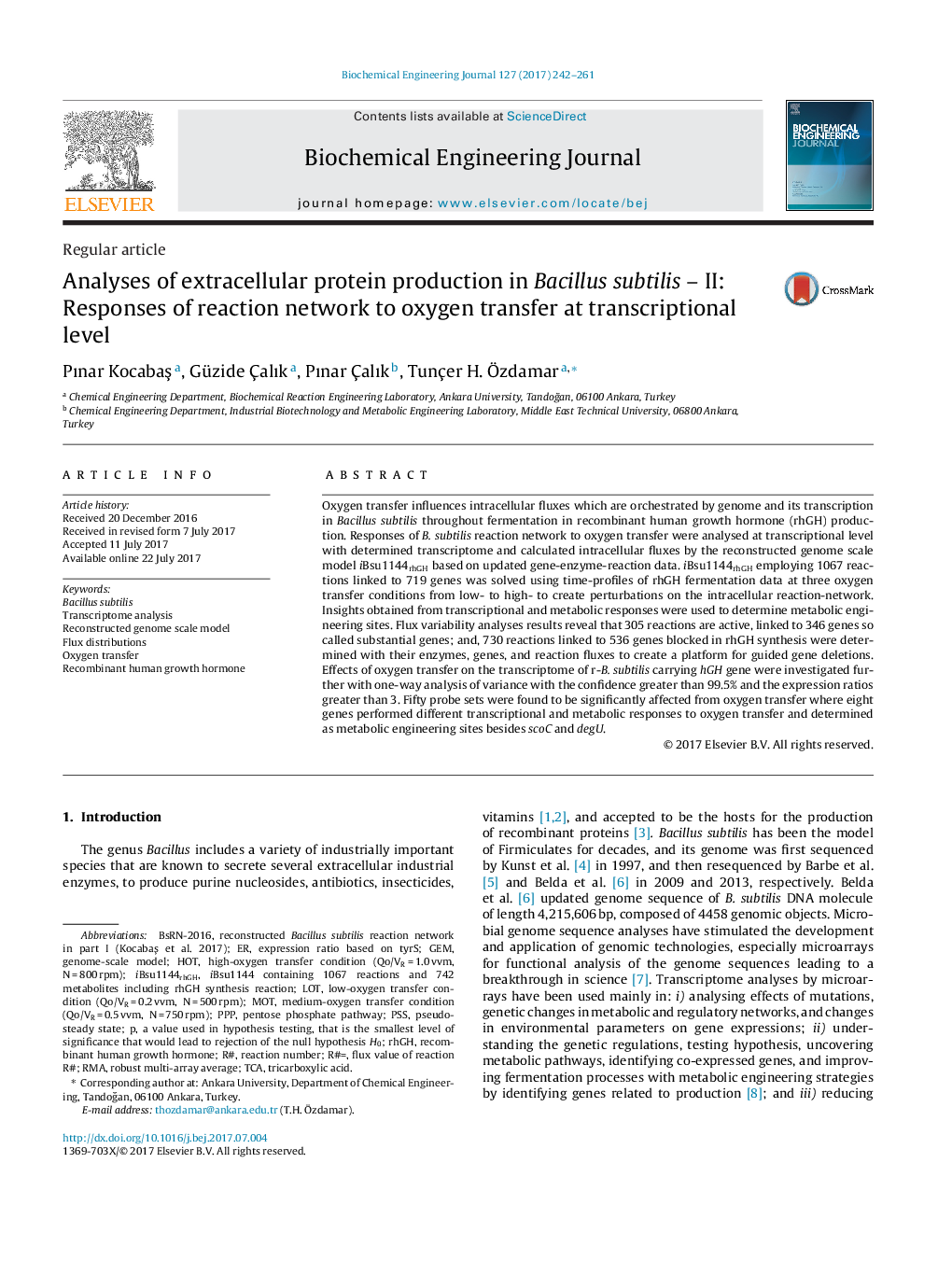| Article ID | Journal | Published Year | Pages | File Type |
|---|---|---|---|---|
| 4752061 | Biochemical Engineering Journal | 2017 | 20 Pages |
â¢iBsu1144rhGH was reconstructed based on recent resequencing of B. subtilis genome.â¢Effects of oxygen transfer on transcriptome of B. subtilis were elucidated.â¢Oxygen transfer effects on intracellular reaction rates of B. subtilis were analysed.â¢Metabolic engineering sites and bottlenecks for rhGH production were determined.â¢Guides well designed genome reductions for B. subtilis host cell constructions.
Oxygen transfer influences intracellular fluxes which are orchestrated by genome and its transcription in Bacillus subtilis throughout fermentation in recombinant human growth hormone (rhGH) production. Responses of B. subtilis reaction network to oxygen transfer were analysed at transcriptional level with determined transcriptome and calculated intracellular fluxes by the reconstructed genome scale model iBsu1144rhGH based on updated gene-enzyme-reaction data. iBsu1144rhGH employing 1067 reactions linked to 719 genes was solved using time-profiles of rhGH fermentation data at three oxygen transfer conditions from low- to high- to create perturbations on the intracellular reaction-network. Insights obtained from transcriptional and metabolic responses were used to determine metabolic engineering sites. Flux variability analyses results reveal that 305 reactions are active, linked to 346 genes so called substantial genes; and, 730 reactions linked to 536 genes blocked in rhGH synthesis were determined with their enzymes, genes, and reaction fluxes to create a platform for guided gene deletions. Effects of oxygen transfer on the transcriptome of r-B. subtilis carrying hGH gene were investigated further with one-way analysis of variance with the confidence greater than 99.5% and the expression ratios greater than 3. Fifty probe sets were found to be significantly affected from oxygen transfer where eight genes performed different transcriptional and metabolic responses to oxygen transfer and determined as metabolic engineering sites besides scoC and degU.
